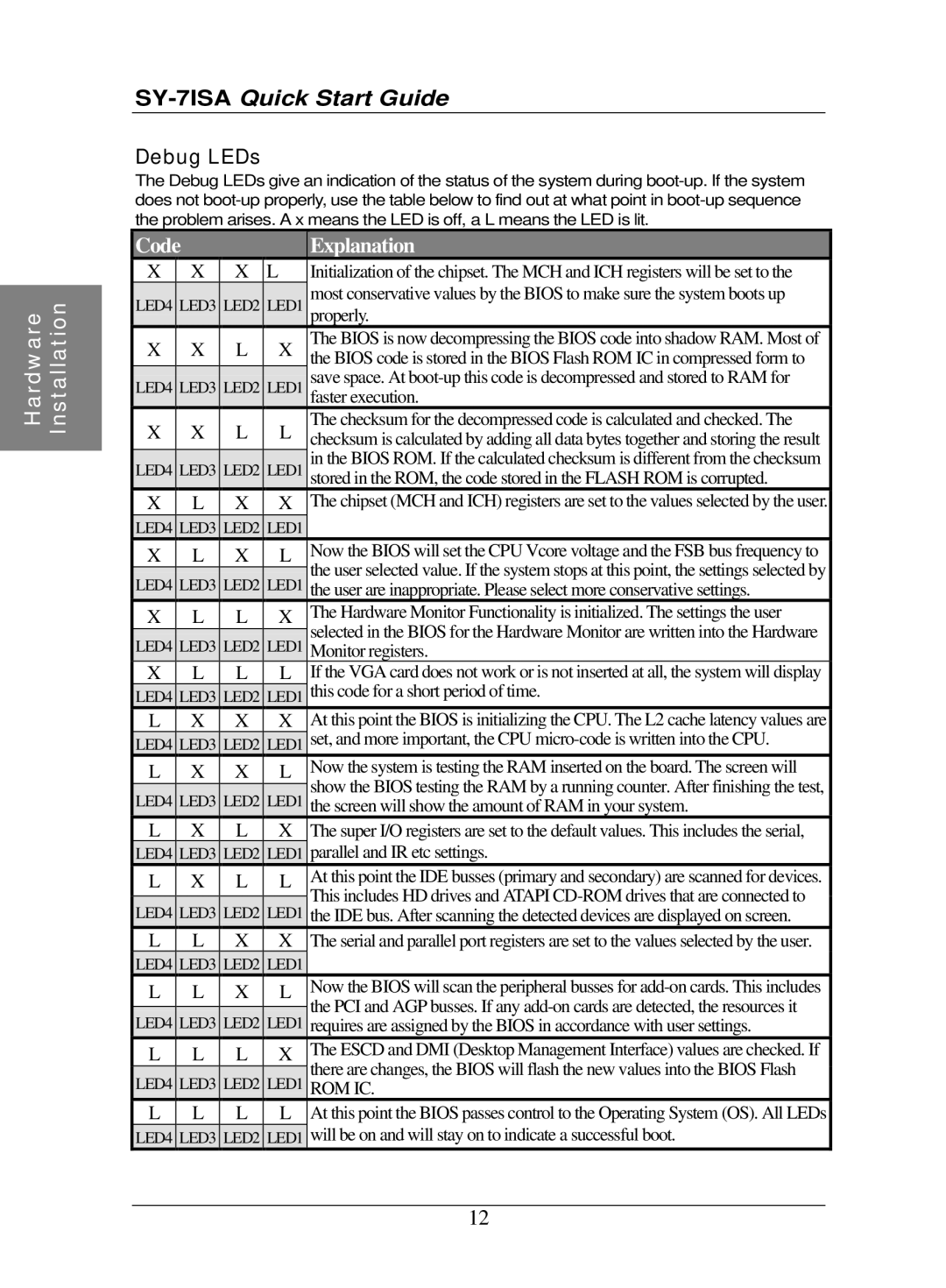SY-7ISA specifications
The SOYO SY-7ISA is a pioneering motherboard that emerged during the late 1990s, primarily targeted towards the Intel Pentium II and Celeron processors. This product is notable for its advanced features and capabilities that appealed to both casual users and computer enthusiasts of the time.One of the key characteristics of the SOYO SY-7ISA is its support for the ISA (Industry Standard Architecture) bus, which allowed for a wide range of peripheral devices to be connected. This compatibility made it an excellent choice for users who needed to integrate older hardware into their systems while maximizing performance with newer components.
The motherboard supports the Slot 1 interface, which was initially designed for the Pentium II processors, offering users the ability to run these powerful CPUs efficiently. It has a 66 MHz front-side bus, which notably improves the data transfer rates between the processor and the rest of the system. The SOYO SY-7ISA also supports a maximum of 512 MB SDRAM, giving users ample memory potential for multitasking and running demanding applications.
In terms of expansion, the SY-7ISA is equipped with five PCI slots, providing users with the flexibility to add various expansion cards such as graphics cards, network adapters, and sound cards. Additionally, it offers two ISA slots, ensuring compatibility with legacy hardware, which was essential for many businesses and tech enthusiasts during its time.
The motherboard features an onboard AC'97 audio controller, delivering quality sound for gaming and multimedia applications without the need for additional sound cards. Also, the SY-7ISA includes integrated dual-channel IDE controllers, capable of supporting multiple hard drives and CD-ROMs, which were crucial for data storage and retrieval.
Another remarkable aspect of the SOYO SY-7ISA is its unique health monitoring feature. The board can provide real-time feedback on temperature and voltage levels, enhancing system stability and longevity. This capability is particularly beneficial for overclockers and those who require high system reliability.
In summary, the SOYO SY-7ISA was a versatile and well-equipped motherboard that catered to a broad audience. Its combination of ISA compatibility, support for the latest CPU technology, and comprehensive expansion options made it a powerful choice for building personal computers during its era. Despite the passage of time, this motherboard remains a noteworthy piece of computing history, representing the evolution of motherboard technology in the late 20th century.

